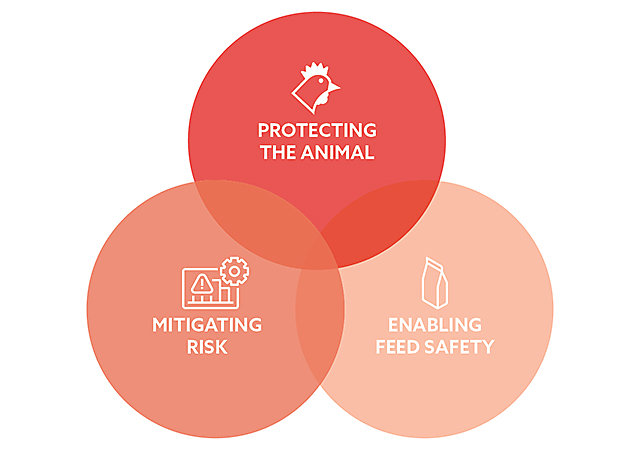The presence of mycotoxins can lead to immune suppression in poultry, consequently impacting upon vaccination efficiency, and toxins can also give rise to various pathological effects such as toxicity of the liver and kidney, as well as show estrogenic responses — all of which are very damaging, not only for the birds, but also for breeders and grandparent stocks.
Added to this, even the smallest amounts of mycotoxins have the ability to impair intestinal health, immune function, and/or pathogen fitness causing altered host-pathogen interactions and in turn, a higher susceptibility to disease.
Specifically, fusarium mycotoxins generally exacerbate infections with coccidia and even aspergillus in all poultry species. A predisposition for necrotic enteritis in broilers is shown when mycotoxins, for example, DON or fumonisins, are present in the feed, even at low dosages.
Moreover, feeding chicks with mycotoxin contaminated diets (comprising Don and Fum), increases plasma cortisol levels — a stress hormone — which has a negative effect on poultry welfare overall.
To paint an even more serious picture, our decade-long research at Kemin has shown an underestimation of feed contamination in poultry due to:
- Incorrect sampling due to the occurrence of hotspots;
- Masked mycotoxins — mycotoxins bound to components in feed, such as sugars, escape analyzes but remain toxic to birds;
- Emerging mycotoxins are not routinely analyzed, in particular, those found in silages.
Read more about Mycotoxin Management in our digital brochure






